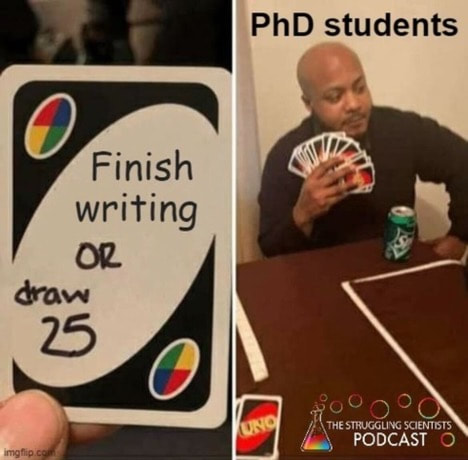The scientific method is a long-standing framework used to teach aspiring scientists how to conduct research and experiments. However, I believe even well-established scientists could benefit from a reminder about the final, and arguably most important, step: communication of the findings. As many memes across social media would suggest, scientists hate writing. This hatred is further proven by the “file drawer problem” where researchers would rather leave completed experiments to die in the metaphorical (or physical) file drawer than to write and publish the work.
I must acknowledge that there are a variety of reasons work doesn’t get published. Oftentimes, it’s the high paywall a lot of journals require for publication. Also of note are the biases against non-English (or English as a second language) researchers and the systemic barriers researchers from the Global South face.
Even those researchers without these barriers and with publications do not communicate their work effectively. Recently, I published a second-order synthesis of coral health research, which found that while review-level literature was fairly well cited amongst scientific literature, the reach of this same research outside academia had much room for improvement. The high citations among academics makes sense, as much of research currently focuses on a “publish or perish” rhetoric, where publication is the last step of the scientific method rather than communication in general. However, research needs to be communicated to these external bodies, as these are often the groups which ultimately drive funding.
Beyond publications and citations, scientists regularly participate in internal communication – most often at conferences giving presentations or creating posters about their research. However, conferences are also environments where scientists are speaking to other specialized researchers. In these cases, there’s no need to explain complex topics with simple language, which is a difficult skill only honed through practice. When these same presentations or posters are presented to a non-specialised audience, it often perpetuates the idea that STEM is difficult to understand and can only be known by an elite few.
In the final year of my PhD, I committed to broadening my involvement in science communication (SciComm). There are so many avenues available to researchers to communicate their research. As such, science is the most interdisciplinary it’s ever been and has the ability to reach audiences all over the world. I’ve put together a list of the top ways I’ve found success in communicating my research.
1. Pub talks
These are rare opportunities, though the most famous one occurs once a year called “Pint of Science.” Going to locations that people outside of the science field are likely to spend time is a great way of ensuring your research is reaching a wide audience. In these situations, I find it best to keep your explanations snappy and passionate. People generally respond well to enthusiasm and a more casual tone.
2. Comedy
The universal way to relate to people. Comedy is less an opportunity to spread your research, and more about how you should communicate it. Oftentimes, people outside of science find science unapproachable or confusing. By bridging this gap in ways people empathise with, scientists can better relay their findings to groups outside their field.
3. STEM outreach events
Outreach events are the most common way science communicators will reach the public. These events are great because they are often in person events and provide the opportunity to attendees to really engage with the science. In these settings, creating activities, physical models, specimen, or any way your audience can “get their hands dirty” in science is going to be a hit.
4. Guest talks (e.g., skype a scientist)
While the name implies an invitation and thus no effort on the scientists part, guest talks usually come as the result of your own efforts. There are many programs which you can express interest for which will help connect you to parties interested in hearing about current research. I personally have worked with groups like CSIRO, Skype a Scientist, and Deadly Science – all of which are amazing organisations dedicated to increasing involvement in STEM. I’ve found lots of pictures and personal stories are great ways to engage with your audience, particularly if you’re delivering content virtually.
5. Social media
In such a connected age, social media can be a great tool for communicating research. While researchers are most familiar with Twitter (now called “X”), I’ve found there is a growing community of SciComm specialists in other social media platforms. As Instagram and TikTok are huge hits with younger generations, researchers have created wonderful online personalities to engage with upcoming science enthusiasts to share their work, answer questions, and provide guidance.
6. Website
Websites, while a great tool to have as a reference to your work and CV, are not the best way to communicate your research. They often need to be searched for, and as a single researcher (not a website controlled and advertised by your institution), traffic is quite hard to come by. While I recommend setting a website up so you can refer all your audiences from the above SciComm events to find you, these alone are insufficient. Treat your website like a center hub to which all your events, publications, media articles, socials, etc. are all connected. I recommend jazzing the website up with lots of photos and other content besides your CV. Giving people something to engage with may have them coming back for more!
Happy communicating!


 RSS Feed
RSS Feed